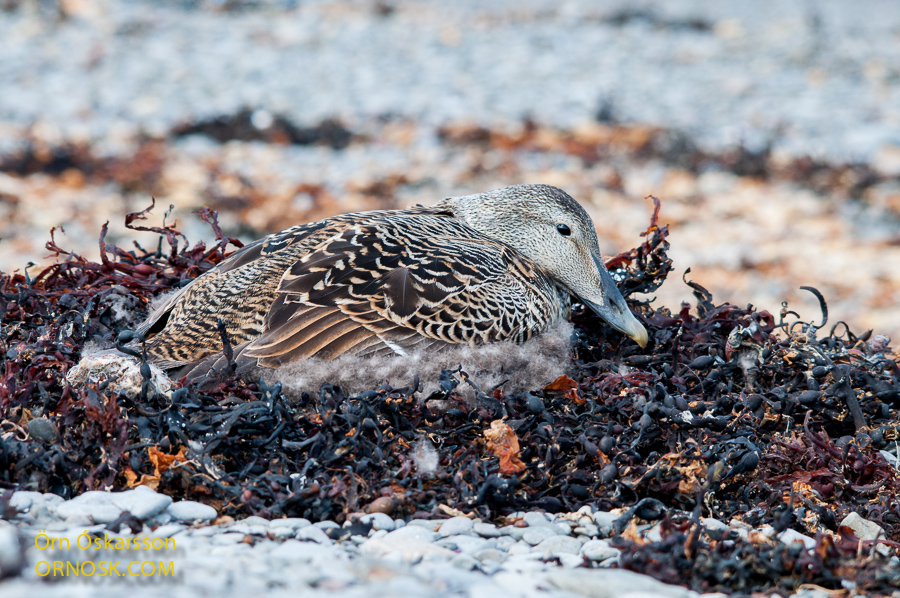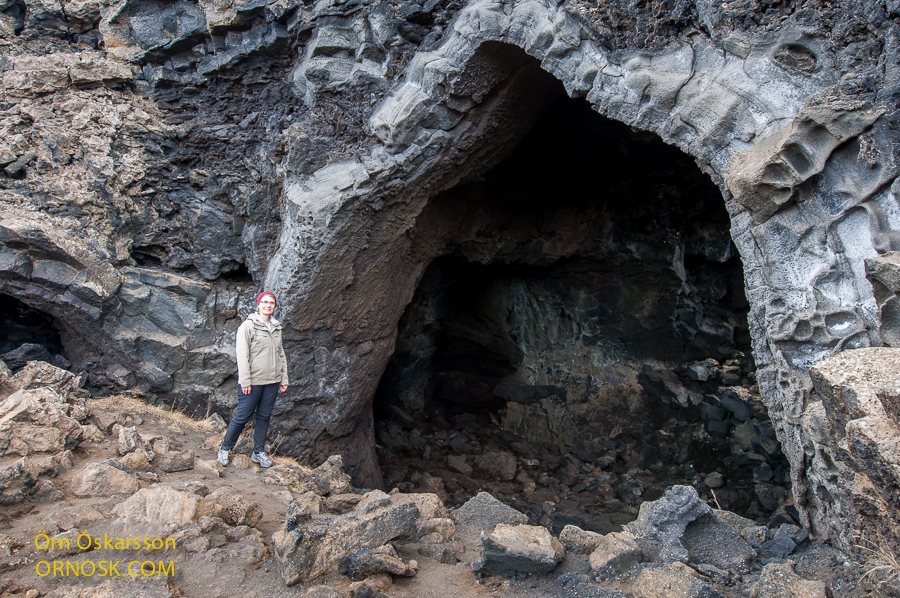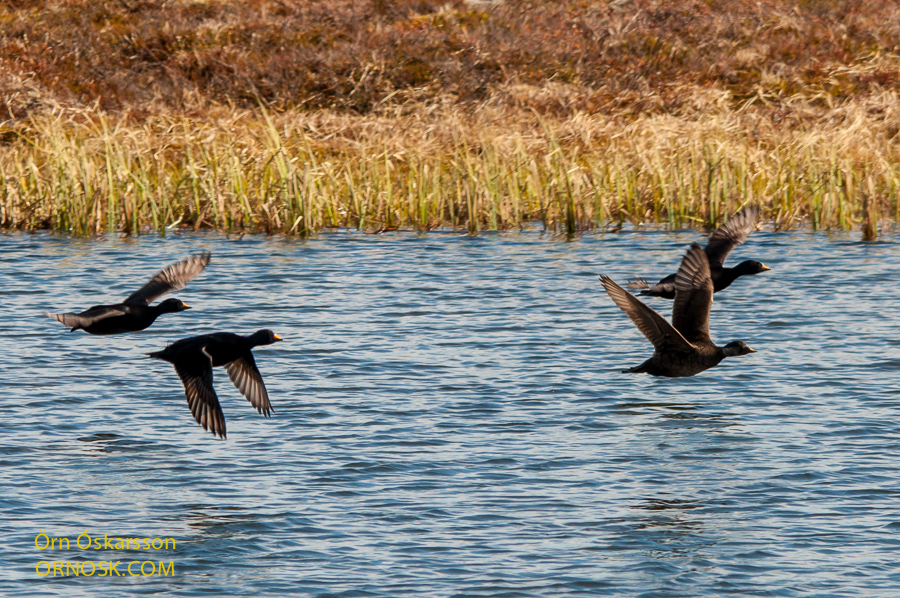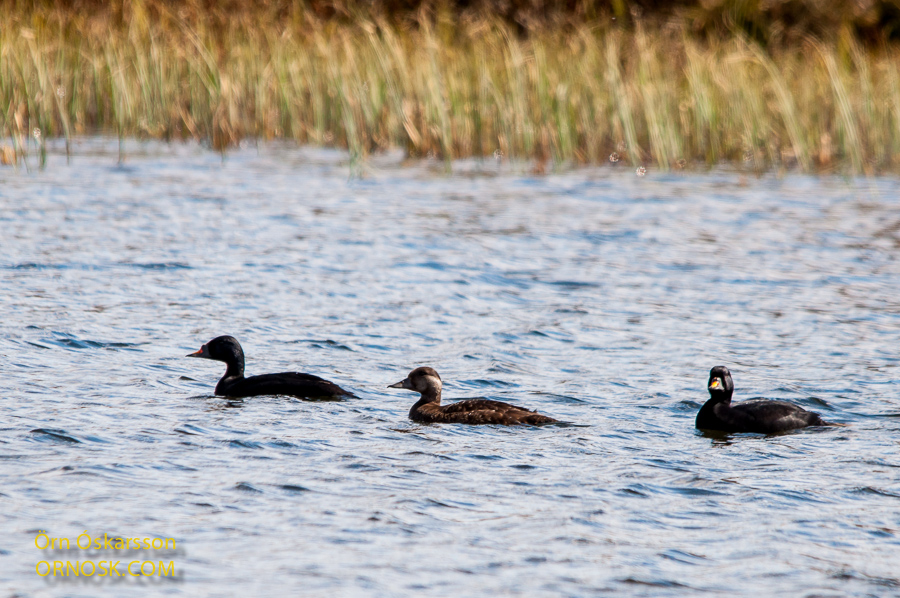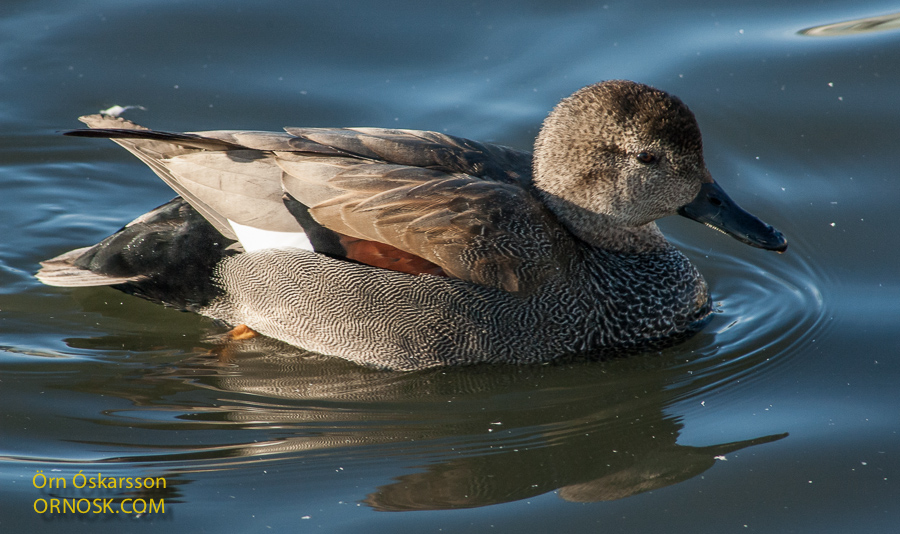
The vigilant Merlin
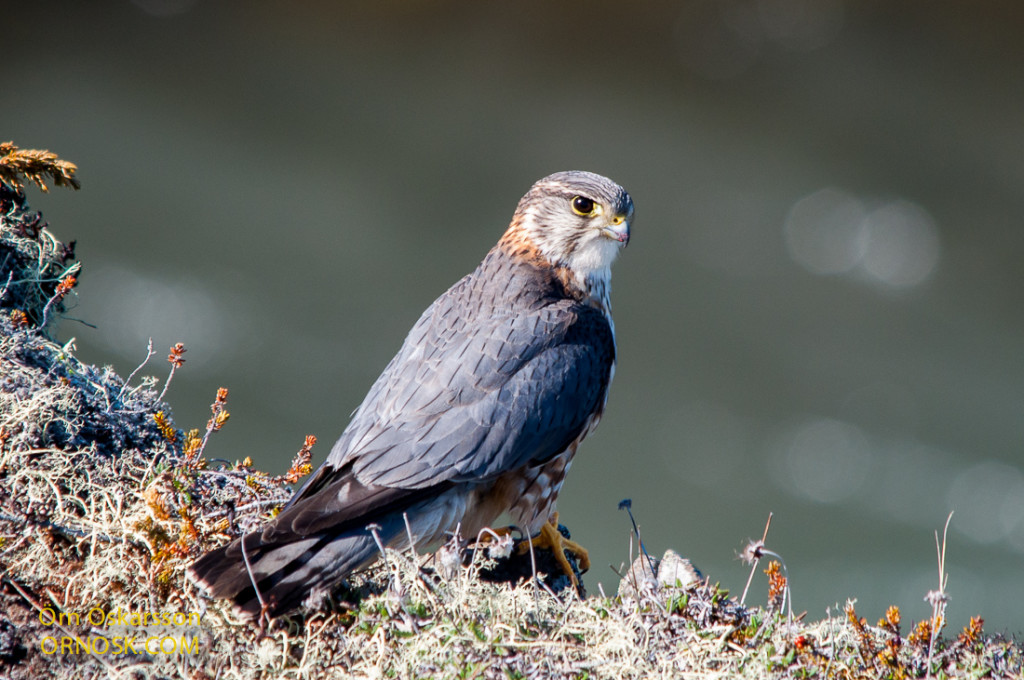
We spotted a pair of Merlins by Goðafoss. They were fighting with a Raven that was trying to get to their nest. This is the male but the female had gone back to the nest. Ravens are scavengers that do not hesitate to steal eggs from other birds’ nests if they get the chance . It did not succeed here and was forcefully driven away.
Eiders and their down
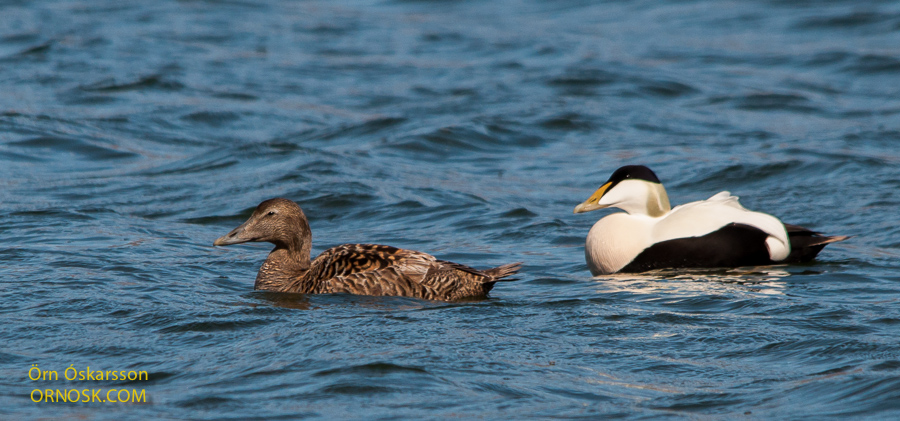
The Eider (Somateria mollissima) is a sea duck and common in Iceland all year round. In the winter time it stays in the ocean around the country. In summer it nests near the shore but ventures up rivers in a few places.
The Eider is famous for its down which is used in pillows and duvets. The eiderdown is gathered manually from the nests, usually in June. When the bird leaves the nest for a few minutes the farmers gather small amounts of down from the nests, replacing it with dry soft grass. Care is taken not to disturb the nest and shortly afterwards the bird lies down on the eggs again.

The Eiders live in colonies and the Eider farmers carefully protect the flocks that choose to nest on their land and the birds return each year.

Herring Gull
The Herring Gull (Larus argentatus) is very common in the Northern hemisphere and their numbers are increasing. More litter from human beings means more food for many species of gulls. The Herring Gull prefers staying near the sea, often in huge flocks, and rarely ventures far inland. In Iceland it is most common in the eastern part of the country.
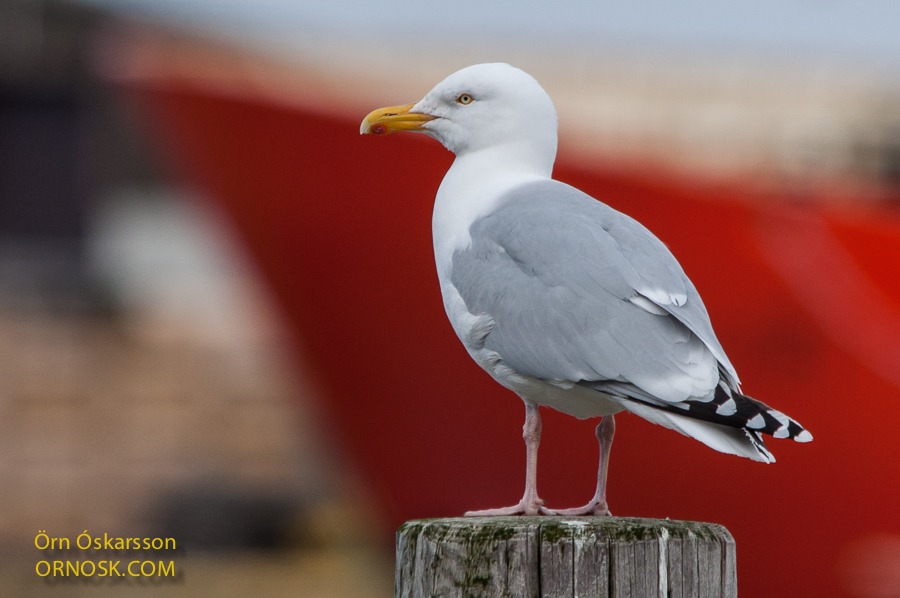
We came across this one in the harbour of the picturesque town, Siglufjörður, in Northern Iceland. The Herring Gull often seems more gracious and cleaner than other bigger gulls.
Feeding the young ones
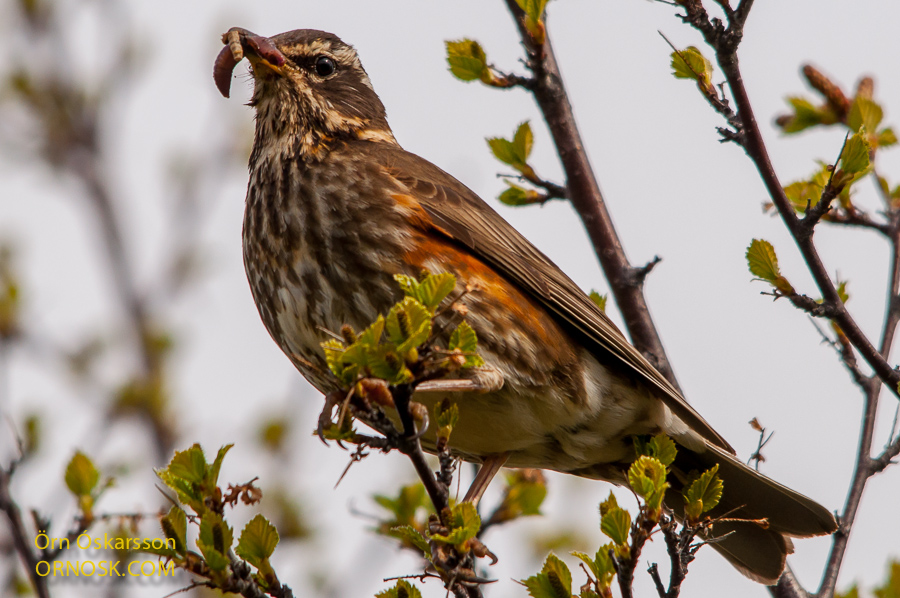
The Redwing is very busy these days. Finding food for its young ones is hard work and takes up a lot of time. Worms and larva are on the menu every day.
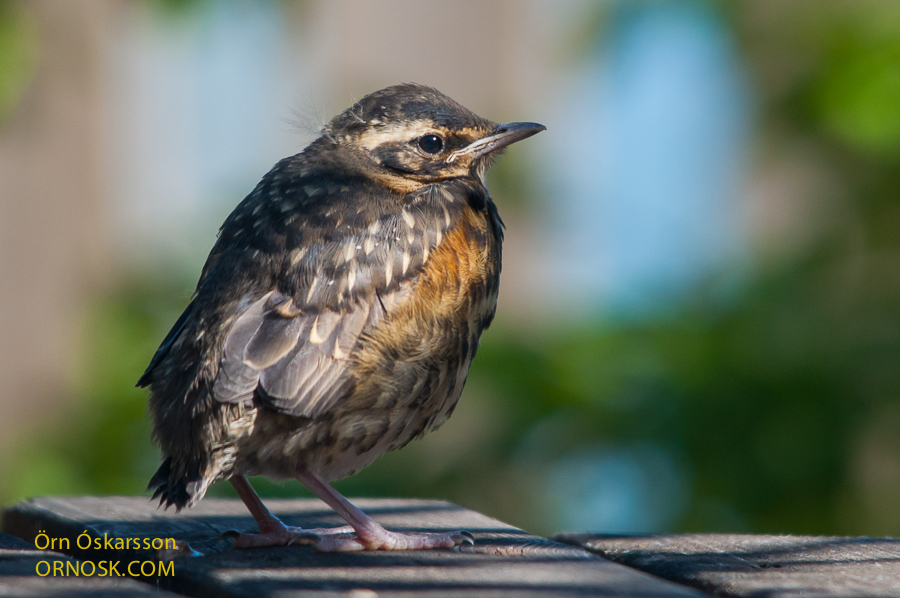
This little chick had found a nice spot on our garden table yesterday morning. Two pairs of Redwings have made nests in our garden this spring so several chicks have been hopping around here lately.
Dimmuborgir – Dark Castles
Dimmuborgir is a lava field just east of Lake Mývatn. It was formed in a huge volcanic eruption in a row of craters about 2300 years ago.
Where Dimmuborgir are now the lava flowed over a small lake, boiling the water, leading to the formation of lava pillars, some quite high. Continue reading Dimmuborgir – Dark Castles
Common Scoter
At this time of year everything is teeming with life and a visit to Lake Mývatn is more than worth its while for the bird watcher. Lots of ducks can be seen there and the Common Scoter is one of them. It is a breeding bird in Northeast Iceland. It breeds by lakes and ponds that are eutrophic.
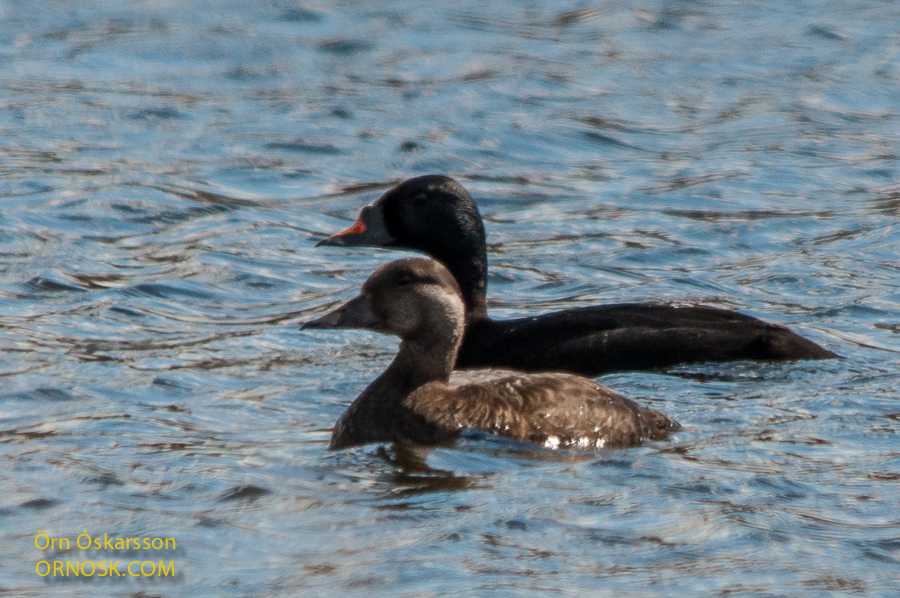
This pair was on Lake Mývatn along with a lot others. The male is black and the female brownish.
The breeding population is around 400 to 500 pairs. Its winter grounds are in the Atlantic ocean in West Europe.
The Glaucous Gull

The Glaucous Gull (Larus hyperboreus) is a non-migrating bird in Iceland. It breeds in Northwest Iceland but roams around the country in the winter time. It is believed that Glaucous Gulls from Greenland and Spitsbergen over winter here.
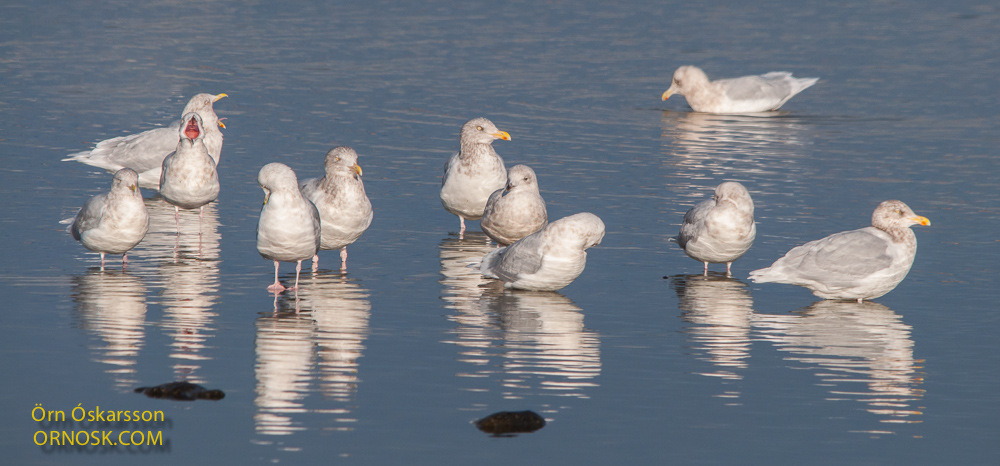
The Glaucous gull breeds in mountains and sea cliffs and gets its food in the sea, mostly small fish. The breeding population in Iceland is estimated around 10,000-15,000 pairs.
The Common Gull
The Common Gull (Larus canus) is a new breeding bird in Iceland, or so they say, although the first known breeding was in 1936. That was in Eyjafjörður, North Iceland. The Common Gull started breeding in other parts of the country much later.

Now there is a breeding area near Selfoss but it is only around 20 years since these birds were first spotted in this area in the summer time. Today the Common Gull is quite common all year round in this area. The breeding population in Iceland is estimated around 700 pairs.
The Gadwall
The Gadwall (Anas strepera) is a dabbling duck like the Mallard. It is uncommon in Iceland except around Mývatn in the North. In the winter time and also in the migration time in spring this beautiful duck can sometimes be seen in the South.
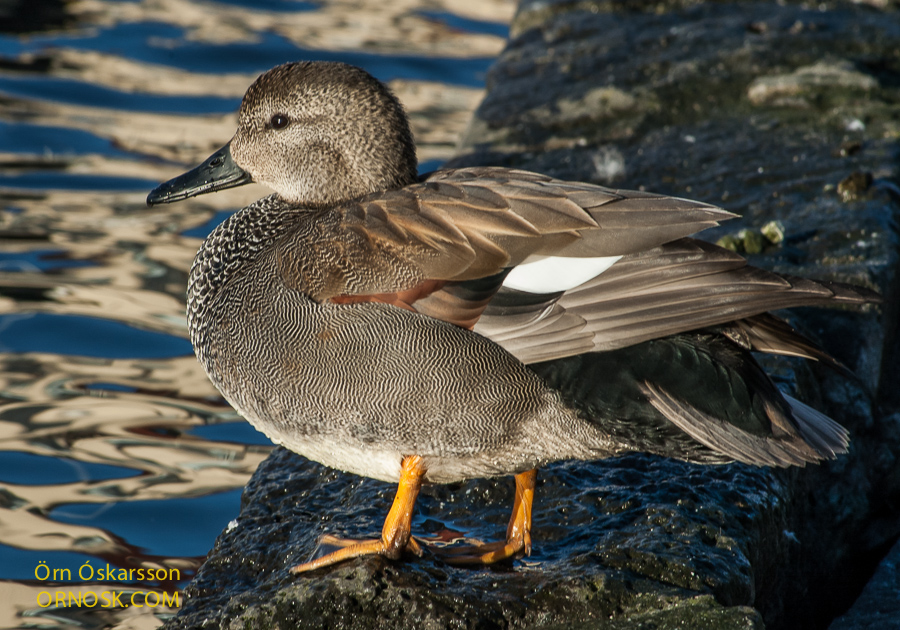
The breeding population is estimated around 500 pairs.
This Gadwall was on the Pond in Reykjavík.

